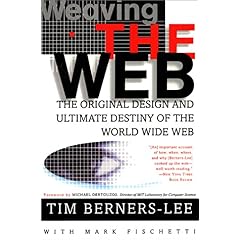Is good enough the enemy of vaguely better?
There is no question that with Semantic Web technologies we could produce a "better" Knowledge Web. The open question is how much better it would be. If a real user were to query a Semantic Web database how much better would the query results really be? The answer is unknown because it would all depend on the nature of the query processing infrastructure, the forms of inference and "reasoning" that are implemented, and how the database is structured. All of those aspects are continuing to evolve and as of today none of that infrastructure is in place in a form to perform queries comparable to even a simple Google query. Sure, we believe the results would be better, but that's about the strongest statement we can make today.
Just this morning I was following a discussion on a Semantic Web email list and David Huynh made the statement:
It's a case of "good enough is the enemy of vaguely better", unfortunately.
So, yes, we know that queries to the Semantic Web will be better, but our degree of specificity in how much better is clearly vague. In the face of a radically different approach that is completely unproven, it is not uncommon that "good enough" wins by default.
Interestingly, Microsoft's new Bing "decision engine" might have to deal with this same issue. Even if their results for many queries are actually "better", the question is whether overall their results are so clearly better that Google's "good enough" will not carry the day. A big unknown, but that is the nature of introducing innovation.
I myself often user a similar metaphor for the greater success of Microsoft-based PCs compared to Apple Macs: Maybe the Mac is better, but if the PC is "good enough" what does it matter if the Mac is somewhat "better"?
The real goal of a true Knowledge Web is that intelligent agents can do a lot more of our tasks for us. The risk today is that even if we succeeded in building such a knowledge web, the actual and perceived benefits relative to the costs and radical shift in mindset required to use such a web and agents might result in a similarly vague relative benefit in comparison with existing "good enough" approaches.



